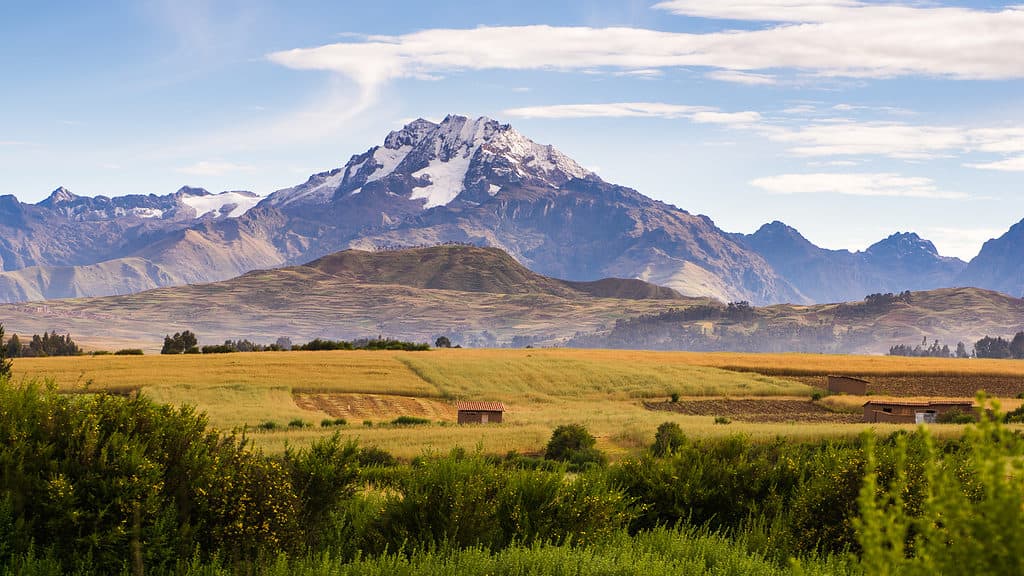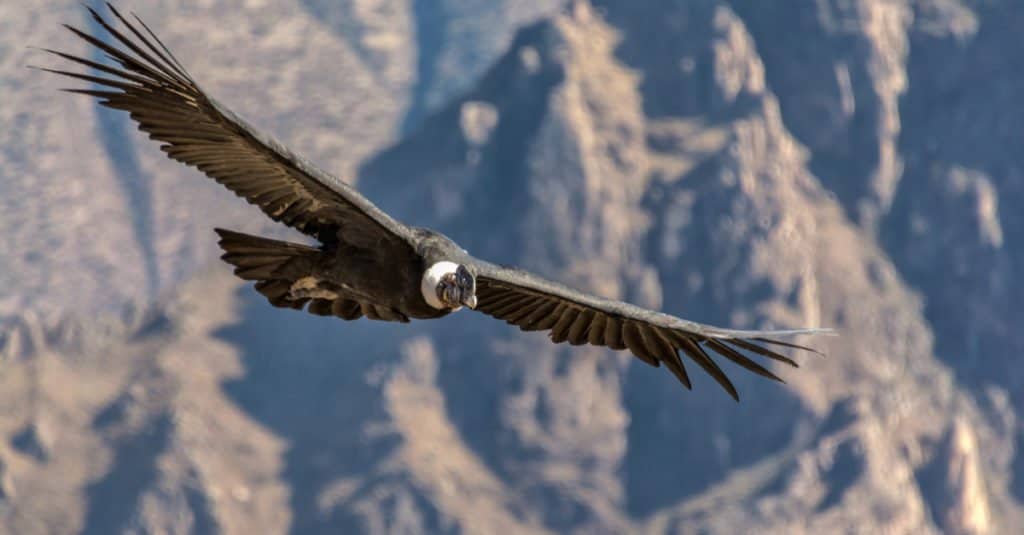South America is home to the world’s longest mountain range, the Andes. One of the mountains within that range boasts a peak of over 22,000 feet! It’s a marvelous location, with climbing opportunities and wildlife viewing. Follow along as we learn about the highest point in South America, how to get there, and the wildlife around it.
Highest Point in South America

Standing over 22,000 feet tall, Mount Aconcagua is the highest point in South America.
©nomadkate/Shutterstock.com
The highest point in South America is Aconcagua, with a height of over 22,000 feet. This makes it the second tallest peak out of the Seven Summits (the highest peaks on each continent). It’s the highest peak in the Western and Southern Hemisphere. This mountain also proudly claims the title of the highest outside of Asia. The exact origin of the name Aconcagua is uncertain, but it may have roots in the Quechua language. The name Aconcagua possibly means “Sentinel of Stone, originating from the Quechua word “Ackon Cahuak.”
The mountain’s precise height has been a hot topic of debate since the early 20th century. According to the Military Geographical Institute of Argentina records, the highest summit of Aconcagua stands 22,831 feet above sea level. This measurement was widely accepted until January 2001, when a daring geologist named Giorgio Poretti and his team set out to measure Aconcagua’s height, coming back with a measurement of 22,840 feet.

Where Is Aconcagua Located on a Map?
Also called Cerro Aconcagua, Aconcagua is a mountain in Argentina near the Chilean border. It’s located in the province of Mendoza, Argentina, roughly 79 miles east of Mendoza and about 95 miles northeast of Santiago. Aconcagua Provincial Park surrounds the mountain.
For those seeking a more challenging and technically demanding ascent, the Polish Glacier (Direct) Route offers a direct line up the east side of Aconcagua, crossing the main Polish Glacier. This route takes 18 to 20 days and requires considerable technical climbing skills and equipment. Climbers need ice climbing gear, crampons, ice axes, and ropes.
Climbing Aconcagua
Aconcagua is a beauty with a bite. This mountain has claimed more than 100 lives, making it a climb that demands your respect. Weather swings from blistering hot heat to icy cold, not to mention the blizzards that can sweep in. This isn’t a beginner’s hike. Physical fitness and some high-altitude climbing experience will go a long way.
Andes Mountain Range

The Andes Mountain chain is the longest mountain range in South America.
©BonnieBC/Shutterstock.com
Aconcagua is part of the Andes Mountains chain and has volcanic origins but is not an active volcano. It’s considered the longest mountain range in South America. Belonging to the larger American Cordillera range, the Andes extend across North America, Central America, South America, and the Antarctic continents. The wide mountainous range stretches over 4,300 miles in South America.
The Andes mountain range gets its name from the Quechua word anti, which means east. The formation occurred during the Mesozoic era and the Tertiary period as tectonic plates pushed the land upward, creating the mountainous terrain.
Can You Drive to the Top of Aconcagua?

You won’t be able to reach the top of Aconcagua using a vehicle.
©Abu hasim.A/Shutterstock.com
No, it is not possible to drive to the top of Aconcagua. Even reaching the base camp, Plaza de Mulas, is beyond the capabilities of regular vehicles. However, the mountain is surrounded by Aconcagua Provincial Park, which is one of the three high-mountain parks in Mendoza, alongside Tupungato Volcano and Diamante Lagoon.
According to reviews, the best time to visit the park is from March 15 to November 15. Traveling to the park during winter can be challenging due to icy road conditions caused by snowstorms. August to June is the winter season in South America, while November to February marks the summer.
Wildlife Around the Highest Point in South America

Large condors live around the highest point in South America.
©Gus Martinie/Shutterstock.com
If you visit Aconcagua, you’ll see all sorts of wildlife. There are large condors and eagles soaring in the skies. The area is also home to pumas, mountain rats, European hares, and red foxes who love eating the hares. There are even herds of llamas surviving the high altitudes. Down by the flatlands and streams, watch for torrent ducks.
Torrent ducks live in fast-flowing mountain streams. Their favorite food is stonefly larvae. Using their streamlined body, large feet, long tail, and flexible bill, it’s easy for them to forage for larvae all day long, and they often swim upstream while foraging. They use their big tail as an oar and their feet as paddles to move across the water’s surface. Diving down to search for food, some females can stay underwater for 12 seconds at a time. Along with their impressive swimming skills, torrent ducks are also undeniably cute.
Other High Points in South America

Mount Ojos del Salado sits between Argentina and Chile.
©iStock.com/reisegraf
What other noteworthy peaks can be found in South America? There are quite a few. After Mount Aconcagua, we have Mount Ojos del Salado at 22,608.268 feet between Argentina and Chile. Other significant peaks include Monte Pissis, Mount Llullaillaco, Mount Cazadero, Mount Bonete, Mount Tres Cruces, Mount Mercedario, Mount Huascarán, and Mount Incahuasi.
Final Thoughts: Highest Point in South America
The Andes mountain range, spanning 4,300 miles, is home to the highest point in South America; Mount Aconcagua. It’s the continent’s highest peak at over 22,000 feet and a challenging adventure. To conquer Mount Aconcagua, approach the climb with respect and thorough preparation. The weather in this region is known for its unpredictable nature, often surprising climbers with scorching heat one moment and sudden blizzards the next. Being ready for anything is key.
Thank you for reading! Have some feedback for us? Contact the AZ Animals editorial team.








